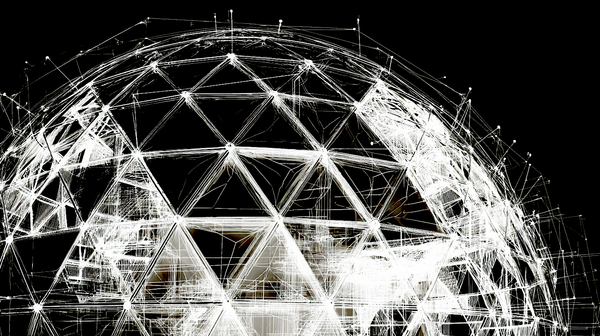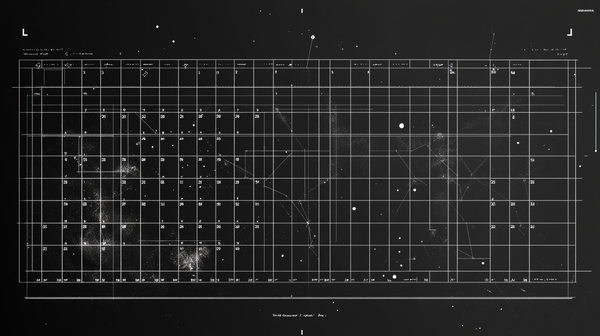The Irreducible Choice: What Remains Human in Strategic Decision-Making
How do we choose between equally viable paths to profitability? The answer lies in recognizing the signals of flourishing, the energy and coherence teams feel when exploring different futures, as legitimate data for navigating strategic choices only humans can make.

The Leader's Dilemma
Imagine staring at two strategy documents on your desk. Both promise profitability, but through fundamentally different approaches.
The first outlines the path of innovation: continuous experimentation, accepting failure rates as high as 70%, cannibalizing existing products before competitors can. "Be the company that makes others obsolete," the document urges. The financial models show strong long-term returns through market leadership and premium pricing.
The second champions optimization: perfecting current offerings, achieving 99.9% reliability, becoming the platform customers never need to leave. "Be the company others can't afford to abandon," it argues. The projections show equally strong returns through customer retention and operational efficiency.
Your CFO has run the numbers. Both strategies could work. Both would generate profit. But they require incompatible choices about resource allocation, hiring, culture, and identity. No amount of analysis can determine whether your company should be the relentless innovator or the rock-solid platform.
So you ask yourself and your team: Which path energizes us? Not which looks better on paper, but which makes us come alive?
For me, and the teams I like to build, the answer is immediate and visceral. When discussing the innovation path, my team leans forward, voices quicken, ideas cascade. When reviewing the optimization strategy, we're professional but subdued. This is competent but constrained.
But you might experience the opposite. Perhaps optimization energizes your team with the elegance of perfect systems, the satisfaction of flawless execution, and the pride in reliability. Perhaps innovation feels chaotic and exhausting while optimization feels like mastery.
This isn't just preference. It's data about which path aligns with your organization's capacity for sustained vitality.
Here we've discovered what Autogenic Realism calls life's directional trend towards flourishing: the subjective experience that signals when our choices enhance rather than diminish system vitality.
The Irreducible Choice
Most organizational decisions involve optimization toward established targets. Once you've decided to be an innovation-driven company, analysis can determine optimal R&D investment levels. Once you've chosen operational excellence, metrics can guide process improvements. These questions have analyzable answers within your chosen value framework.
But some decisions involve choosing that framework in the first place. Should we be the premium product company or the accessible alternative? Do we prioritize employee wellbeing or shareholder returns? Should we disrupt ourselves or perfect what we have? These aren't optimization problems.
In a capitalist economy, profit is a constraining force; businesses that don't generate profit eventually cease to exist. But within that constraint, genuinely irreducible choices emerge about what kind of profitable company to be. These choices can't be optimized away because they involve fundamentally different theories of value creation.
Consider these genuinely irreducible tensions:
Excellence vs. Accessibility: Patagonia pursues premium pricing through exceptional quality and environmental activism, betting that a smaller customer base paying higher prices creates sustainable advantage. REI democratizes outdoor gear through member cooperatives and accessible pricing, betting that bringing more people outdoors builds a larger, loyal community. Both are profitable outdoor retailers, but through irreducibly different approaches.
Innovation vs. Optimization: Netflix continually disrupts its own model, moving from DVDs to streaming to original content production, accepting the instability of constant reinvention. Roku focuses on perfecting their streaming platform, optimizing existing features rather than revolutionary changes. Both dominate streaming, but through fundamentally different capabilities and cultures.
Narrow Focus vs. Diversification: In-N-Out Burger has sold essentially the same menu since 1948, betting that perfecting a few items creates more value than variety. Cheesecake Factory offers over 250 menu items, betting that extensive choice drives customer visits. Both are highly successful restaurant chains but through fundamentally different theories of value.
These aren't optimization problems because each choice fundamentally shapes what your organization becomes, your capabilities, culture, and identity. Once chosen, these paths create their own momentum and logic.
This is where to turn to the subjective signals of vitality and flourishing to guide our choices. When analytical tools can only show different paths to profitability, when every option has successful examples, when the question is "what kind of company are we?", the subjective experience of energy, coherence, and meaningful engagement provides the navigation signal we need.
What Flourishing Is
Within Autogenic Realism's framework, flourishing isn't mystical intuition or personal preference. It's the subjective experience that emerges when systems operate with genuine vitality, maintaining coherence while adapting creatively to constraints.
Think of how an experienced entrepreneur can sense product-market fit before the metrics fully reflect it. Or how great leaders know when their organization is in flow versus merely functioning. Flourishing works similarly. It's consciousness detecting alignment between chosen direction and organizational capacity.
When individuals and teams flourish, specific patterns emerge:
Energy generation rather than depletion. The chosen path creates rather than consumes energy. A team committed to innovation finds experimentation energizing, while a team forced into it feels exhausted. The same activity produces opposite effects depending on alignment.
Coherence across difference. Different parts of the system work together naturally. When Patagonia chose excellence over accessibility, design, manufacturing, marketing, and customer service aligned around this choice without constant negotiation.
Developmental momentum. The system shows increased capability in its chosen direction. Each success builds confidence and skill. Netflix's commitment to innovation made each disruption of their own model easier than the last.
Meaningful engagement. Work feels significant because people understand how their efforts serve the chosen theory of value. Costco employees take pride in enabling customer savings; Hermès craftspeople find meaning in creating perfection.
These aren't just feelings. They're experiential indicators that your chosen path aligns with your organization's actual capabilities and potential.
Why Analysis Alone Fails
The failure of analytical approaches at these choice points isn't insufficient data. It's structural. Profit is like health: necessary for survival but not sufficient for direction. Just as "be healthy" doesn't tell you whether to be a marathon runner or a powerlifter, "be profitable" doesn't tell you what kind of business to build.
Consider a software company choosing between serving enterprise clients (high touch, high margin, slow growth) versus SMB markets (low touch, volume-based, rapid scaling). Analysis can model both paths to profitability. It can project revenues, costs, and market sizes. But it cannot determine which aligns with your organization's deeper capacities.
Metrics make this worse by creating false precision. You might track both enterprise sales efficiency and SMB conversion rates, trying to optimize both. But this creates oscillation, swinging between strategies without committing to either. The metrics can't resolve the fundamental choice about what kind of company you're building.
This limitation becomes more pronounced as AI handles analytical tasks. AI can instantly model a thousand paths to profitability, optimizing for any parameter you specify. But it cannot experience which path energizes your specific collection of humans with their particular histories, capabilities, and aspirations. It cannot feel the difference between competent execution and inspired creation.
How Navigation Works
When you recognize that your strategic choice isn't amenable to further analysis, you shift from trying to solve the tension to navigating it. Both innovation and optimization could generate profit. The question is which theory of value creation aligns with your organization's vitality.
First, acknowledge that profit constrains but doesn't determine the choice. The company needs to be profitable, but that leaves open the question of how to be profitable. This reframing moves the conversation from "which is more profitable?" to "what kind of profitable company are we?"
Then explore what each path really means. Innovation means accepting failure, celebrating learning, hiring for creativity over credentials. Optimization means minimizing variation, perfecting processes, hiring for precision and reliability. Map not just business implications but cultural requirements.
The breakthrough comes through attending to energy patterns. When your leadership team discusses innovation scenarios, they generate ideas spontaneously. When they discuss optimization, they dutifully list requirements. This isn't about personal preference. Your COO, typically process-focused, becomes animated when describing how to "operationalize experimentation."
Most importantly, test this insight. Run a three-month experiment with explicit permission to fail, measuring not just outcomes but energy levels. Teams voluntarily work longer hours, cross-functional collaboration increases, and customer feedback improves. Not because they're told to but because they're energized. Flourishing validates the choice.
How Organizations Navigate These Tensions
The pattern you discovered appears across organizations facing these fundamental choices about value creation. These examples illustrate how flourishing signals alignment between chosen path and organizational vitality.
The Innovation-Excellence Tension
A medical device company might face a choice between pursuing breakthrough innovation with experimental materials and AI diagnostics versus perfecting their existing devices for absolute reliability. Both paths could be profitable: innovation capturing new markets, excellence dominating current ones.
You'll see different energy patterns in the different strategy sessions. When discussing innovation scenarios, teams may sketch on whiteboards, debate possibilities, and interrupt each other with ideas. When reviewing excellence optimization, those same people might become methodical and careful but subdued. If the organization's talent thrives on solving "impossible" problems, choosing radical excellence would work against their nature. The vitality signals would guide them toward innovation.
The Scale-Intimacy Tension
A successful three-location restaurant group might face a choice between PE-funded rapid expansion (50 locations in five years) versus deepening their community presence through adjacent businesses. Both could grow revenue: one through geographic scale, the other through customer lifetime value.
You'll see the leadership team show different energy when exploring each path. Discussions of the PE model may turn mechanical: site selection criteria, operational manuals, training systems. When imagining local expansion—adding catering, private dining, or a cooking school—founders might start sketching ideas and calling potential partners. This energy differential isn't romantic small-business thinking but data about what this specific team could execute with sustained vitality.
The Automation-Craft Tension
A high-end furniture workshop might face a growth opportunity requiring 10x production volume, forcing a choice between automated manufacturing and staying artisanal. Both paths could be profitable: volume through efficiency or premium pricing through craft.
You'll see craftspeople respond differently to each future. When touring automated facilities, they may ask professional questions about tolerances and output rates. When discussing enhanced craft—custom inlays, teaching workshops, limited editions—they might interrupt each other with ideas and start handling materials. A team energized by making "fifty perfect pieces rather than five thousand good ones" will find more vitality in deepening craft while using selective automation only to eliminate drudgery.
From Vitality to Viability: The Bridge
Choosing a path that activates organizational energy is only the beginning. Many companies discover what energizes them only to fail in execution. The startup excited about disruption burns out from poor operational discipline. The craft company committed to quality can't scale sustainably. The innovative medical device company creates brilliant products that can't navigate regulatory requirements.
This is where Autogenic Realism's distinction between vitality and viability becomes critical. Vitality is the energy and coherence that emerges from aligned choice. It's the activation your team felt when choosing innovation. Viability is the sustained capacity to function and develop under real constraints. It's what emerges when that vitality is channeled through effective structures.
The bridge from vitality to viability requires applying Autogenic Realism's diagnostic tools:
Feedback Integration: The energized innovation team still needs systems to detect when experiments aren't working. Without feedback loops, enthusiasm becomes delusion.
Boundary Management: The company choosing accessibility over luxury must still maintain quality boundaries. Energy without appropriate constraints becomes chaos.
Resource Allocation: The team activated by ambitious goals must still allocate resources sustainably. Vitality without resource discipline leads to burnout.
Adaptive Capacity: The organization committed to its chosen path must still adapt to changing conditions. Energy without flexibility becomes brittleness.
Coherence Maintenance: Different parts of the organization must align around the chosen direction. Activation without integration creates fragmentation.
A team that finds energy in innovation still needs to build rigorous systems. They must create rapid feedback loops between prototyping and testing. They need clear boundaries between experimentation zones and production standards. They have to allocate resources to sustain both innovation and quality functions. They must develop adaptive capacity to respond to regulatory changes. They need to maintain coherence by ensuring all teams understand how their work supports the integrated vision.
Flourishing emerges not from energy alone but from vitality structured for viability. The navigation signal tells you which mountain to climb. The optimization work ensures you actually reach the summit.
Building Navigation Capability
Developing sensitivity to flourishing as a navigation signal requires practice, particularly in business contexts that traditionally prioritize analytical over experiential data.
Start by mapping your organization's real value tensions. Not the problems that analysis could solve with better data, but the choices between different theories of value creation. Which profitable paths pull you in incompatible directions?
Practice noticing energy patterns in strategic discussions. When does your team lean in versus lean back? When do ideas flow versus feel forced? This isn't about following whims but detecting alignment between possible directions and actual capabilities.
Create small experiments that test different value choices. Give teams permission to fully embody one approach for limited periods. Measure traditional metrics but also track energy, voluntary collaboration, and creative output. Use flourishing as data about which paths align with organizational vitality.
Most importantly, develop language for discussing these experiences in business contexts. Frame flourishing not as soft sentiment but as hard data about sustainable execution. When teams are energized, they work better, stay longer, and innovate more. When they're depleted, even successful strategies eventually fail through attrition.
The Future of Leadership
As AI systems become increasingly sophisticated at optimization within chosen parameters, the ability to choose those parameters becomes the essential human contribution. AI can show you a thousand paths to profitability. It cannot tell you which kind of profitable company you should become.
This isn't because AI lacks data or processing power. It's because these choices require engaging with lived experience in ways that consciousness, not computation, enables. An AI can model what happens if you prioritize innovation over optimization. It cannot experience which choice aligns with your organization's unique collection of humans and their potential.
Understanding flourishing as navigation signal suggests a profound shift in how we develop leaders. Rather than competing with AI on analytical sophistication, we can develop our unique capacity to sense alignment between strategic choices and organizational vitality. Rather than seeking only objective optimization, we can cultivate sensitivity to the experiential data that guides sustainable value creation.
This doesn't abandon rigor for intuition. Effective navigation requires deep market understanding, careful attention to experiential patterns, disciplined testing of chosen directions, and clear connection to business outcomes. The rigor lies in engaging seriously with the question of what kind of organization you're building, not just whether it's profitable.
Trusting the Signal
Profit constrains but doesn't determine. Within the requirement of financial sustainability, fundamentally different theories of value creation remain possible. The choice between them can't be optimized because they represent different answers to what kind of organization you want to be.
Flourishing provides the navigation signal for these choices. Not as mystical intuition but as practical data about alignment between strategic direction and organizational capacity. When your chosen path generates energy rather than depletes it, when different parts of your organization naturally cohere around it, when each success builds capability for the next, these experiential patterns validate your navigation.
In this case, choosing innovation while building operational excellence to support experimentation could lead to breakthrough products and sustainable growth. More importantly, it builds organizational confidence. Each subsequent strategic choice becomes easier. Not because analysis improves but because you've learned to trust your experience of what energizes versus depletes your organization.
The future belongs to organizations that understand this distinction. They'll use AI to optimize brilliantly within chosen directions while trusting human experience to choose those directions wisely. They'll recognize that in a world where every path can be profitable, the question isn't which generates the most profit but which theory of value creation aligns with their deepest capacities.
The signal is there in how your organization responds to different futures. In what energizes versus exhausts. In what creates coherence versus forces compromise. We need only learn to trust it as legitimate data about which profitable path is truly ours.





